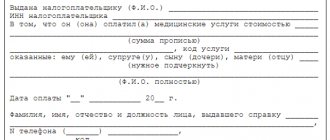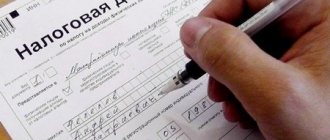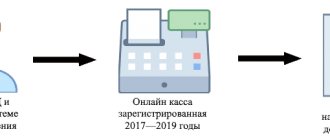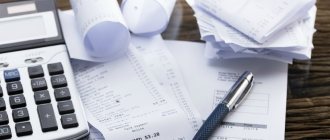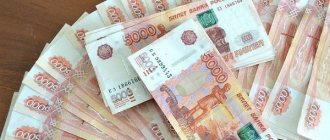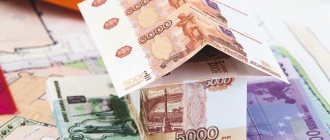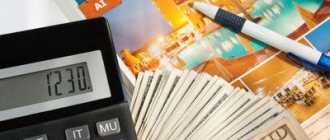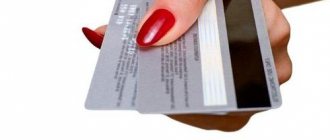Every person living in our country has heard about value added tax. This tax is often mentioned in advertisements on TV and radio stations. Even store receipts contain a mention of this tax. However, many people pay little attention to this tax. Most often, this tax is the object of interest of entrepreneurs who are forced to pay it. In this article we propose to consider the interesting question of who pays VAT, the buyer or the seller.
VAT is a way for the country’s budget to receive a partial cost of a product, service or work
What is VAT?
VAT - value added tax. It is paid when the company sells goods, works, services and property rights.
SELLS GOODS, WORKS, SERVICES OR PROPERTY RIGHTS. For example, a company sold tomatoes or office space - it is obliged to pay VAT.
TRANSFERS GOODS, WORK, SERVICES OR PROPERTY RIGHTS FREE OF CHARGE. For example, one legal entity transfers an industrial workshop to another free of charge or gives a microwave oven as a gift in a store when buying a refrigerator - VAT must be paid on all transactions at market value.
IMPORTS GOODS INTO THE TERRITORY OF THE RF FROM ABROAD. For example, he brings chocolate from Japan or clothes from China to later sell in Russia. VAT must be paid on each delivery.
PERFORMS construction and installation work for himself. Builds a building, a workshop, or makes repairs on premises using his own efforts.
In the law this is called sale, but for simplicity we will call it sale.
VAT is an indirect tax. Typically, the business does not pay it out of pocket, but bills it to the end customer. The buyer pays the tax amount, and the company transfers this money to the tax office. You may have noticed that the store receipt separately indicates the price of the product and separately VAT. But if the goods were not sold, but were given as a gift, the entrepreneur will still have to pay VAT on it - from his own money.
Tax is charged on added value. For example, an entrepreneur bought a kilogram of cucumbers from a supplier for 100 rubles, and sold them for 150 rubles. If the supplier of cucumbers is also a VAT payer, then the entrepreneur will pay tax only on the 50 ruble difference.
Who are the objects of taxation?
Not everyone has the obligation to pay taxes.
Such an obligation may arise if there is an object of taxation. The absence of such an object frees you from having to pay anything. The object of taxation is not some kind of individual or legal entity. These are the types of commodity-money transactions:
- sale of goods (services), including items pledged, as well as transfer of rights to property;
- transfer (transfer) of rights to a product or the final result of a service performed;
- gratuitous transfer of property to other enterprises and individuals;
- imported goods from abroad.
- construction and installation work for own needs;
The following cannot be classified as objects of taxation:
- gratuitously transferred objects (cultural, municipal purposes), structures and objects of state power;
- property purchased from the state as a result of privatization;
- works and services of government bodies;
- free transfer of objects to government agencies;
- sale of land plots;
- transfer of rights to property to the legal successor of the organization;
- use of funds or real estate of non-profit organizations as the authorized capital;
- services for the transfer of state property free of charge from the state to non-profit organizations;
- sale of state property.
Who pays VAT?
VAT is paid by companies and individual entrepreneurs using the general taxation system, as well as by everyone who imports goods across the border, that is, who imports.
WHO ARE VAT TAX AGENTS?
VAT is paid by companies that operate on a common system. But there is one exception. All companies are required to pay VAT if they become tax agents. Here are some examples of when you will have to do this.
YOU BOUGHT A GOODS OR SERVICE IN RUSSIA FROM FOREIGN COMPANIES THAT ARE NOT REGISTERED FOR TAX REGISTRATION. For example, we purchased equipment in Russia from a foreign company.
YOU BOUGHT SCRAP METAL, WASTE PAPER OR RAW ANIMAL HIDE FROM SELLERS - VAT payers.
SOLD GOODS, property or services of a foreigner under a commission agreement, commission or agency agreement. For example, they helped sell an apartment to a foreigner and took a commission from the sale, and payments were made through your account.
Rent STATE OR MUNICIPAL PROPERTY. For example, they rented premises directly from the city property management committee.
YOU ARE ENGAGED in the SALE of confiscated PROPERTY. If the state has authorized the sale of confiscated property, VAT will have to be paid on the sale price.
BOUGHT OR RECEIVED STATE PROPERTY. In this case, the property should not be assigned to state or municipal institutions.
Accounting for shipping transactions from the seller
Upon transfer of goods, the supplier's accounting records the write-off of the cost of products sold and charges VAT on the sale price. The postings will be as follows:
| Operation | D/t | K/t |
| on the date of shipment | ||
| The shipment is reflected at the cost of the goods | 45 | 41 |
| VAT charged | 76 | 68/2 |
| on the date of payment | ||
| Funds have been received from the buyer to the account | 51 | 62 |
| Revenue included | 62 | 90/1 |
| Disposal of goods in transit | 90/2 | 45 |
| When recognizing revenue, VAT accrued on sales is taken into account | 90/3 | 76 |
Example:
Rio LLC, on the basis of an agreement with Container LLC, shipped a batch of hardware worth 600,000 rubles on 03/03/2020. (including VAT 100,000 rub.). Cost of products sold – 200,000 rubles. Payment for the goods from the buyer was received on March 25, 2020. The following entries were made in the accounting of Rio LLC:
| Operation | D/t | K/t | Sum |
| as of 03/03/2020 | |||
| The transfer of hardware from the warehouse is reflected | 45 | 41 | 200 000 |
| VAT charged (600000/20 x 120) | 76 | 68/2 | 100 000 |
| VAT paid | 68/2 | 51 | 100 000 |
| as of 03/25/2020 | |||
| Payment received | 51 | 62 | 600 000 |
| Revenue taken into account at sales price | 62 | 90/1 | 600 000 |
| Write-off of the cost of goods in transit | 90/2 | 45 | 200 000 |
| VAT on goods sold is included in revenue | 90/3 | 76 | 100 000 |
VAT benefits
There are VAT benefits. Some companies may not pay tax at all, others only on certain transactions.
SOME COMPANIES AND INDIVIDUAL INDIVIDUALS ARE NOT OBLIGED TO PAY VAT:
1) IP on UTII, simplified tax system and patent.
2) Participants of the Skolkovo project.
3) Individual entrepreneurs and companies on any tax system, if over the last three months their revenue is less than 2 million rubles. Even if the company is on the general taxation system. To obtain such an exemption, you will have to submit additional documents.
COMPANIES ON THE Unified Agricultural Tax operate under special conditions. From 2021, they pay VAT if they earn more than a certain amount in a year:
~100 million rubles for 2021;
~90 million rubles for 2021;
~80 million rubles for 2021, etc.
To receive benefits for the Unified Agricultural Tax, you need to submit documents for exemption. If this is not done, the company will have to pay VAT on any income.
SEPARATE OPERATIONS. There is no need to pay VAT on transactions such as:
~cash loans;
~sale of medical goods and services;
~transportation of passengers;
~stock trading.
The full list is in Art. 149 Tax Code of the Russian Federation
Who is not a VAT payer?
To find out who does not pay VAT, you need to carefully study the tax legislation . Today, this category includes persons participating in operations involving currency conversion. In addition, the operation of transferring property assets in the form of investments under a concession contract is also not subject to taxation. Those persons who participate in transactions involving the donation of property assets of a social or cultural nature do not need to pay this tax. These rules also apply to real estate and housing.
Services provided by government agencies cannot be taxed. This category includes law firms and companies that repair domestic equipment used in foreign countries. It should also be noted that the transition to a special taxation regime allows business entities to relieve themselves of the obligation to pay VAT. Simplified and patent taxation schemes avoid the need to transfer part of the income to the budget. This privilege is also granted to those companies that use the Unified Agricultural Tax.
It is important to note that even companies using the basic taxation scheme can relieve themselves of the obligation to pay income tax. This benefit is provided to those organizations that have low profitability. In the event that the amount of revenue received during one quarter is less than two million rubles, the company receives the right to withdraw its VAT payer status. This benefit is provided for a period of one year. If during this time period the company’s income does not increase, the entrepreneur can extend the received status . It is important to note that companies selling excise goods cannot take advantage of this benefit. In addition, you need to pay attention to the fact that obtaining the above-mentioned status may negatively affect the overall development of the organization.
VAT is present on all goods purchased by us
How is VAT calculated?
In this article we will look at the basic version of VAT calculation. In fact, there are many subtleties that only a professional accountant can understand.
The VAT that must be paid to the tax authorities is calculated using the following formula:
VAT payable = Output VAT − Input VAT + Recovered VAT
Output VAT is the amount of the tax base multiplied by the VAT rate.
The tax base is the amount of goods sold, that is, everything that the company sold or donated. Products that participate in promotions are also taken into account. If you give customers a hairdryer for the purchase of a drill, you will also have to pay VAT on the cost of the hairdryer.
VAT RATE is a percentage of the tax base, which is determined by the state depending on the type of transaction.
INPUT VAT is the VAT invoiced to you by your suppliers. This is the amount of VAT you must pay to suppliers along with charges for raw materials, supplies or equipment. It can be deducted from tax. It doesn’t matter to the tax authorities whether you paid the invoices from suppliers or not, so formally you can claim the entire amount of the invoices for VAT deduction.
Recovered VAT is part of input VAT, which in certain situations companies must return to the budget. For example, if they switched from the general taxation regime to the simplified taxation system and they still have goods in the warehouse from which they previously made a deduction. For more details, see paragraph 3 of Art. 170 Tax Code of the Russian Federation.
FOR EXAMPLE:
The LLC buys clothing from a supplier and then sells it at retail. The VAT rate for them is 20%.
The LLC purchased the batch for 300 thousand + 60 thousand rubles VAT, and sold it for 500 thousand rubles + 100 thousand rubles VAT.
Output VAT in this case is 100 thousand rubles. The LLC bought goods from a supplier with VAT, so the input VAT is 60 thousand rubles.
LLCs can deduct input VAT from the tax amount: 100 thousand − 60 thousand = 40 thousand rubles. There is no recovered VAT in this example. As a result, you have to pay 40 thousand rubles to the tax office.
VAT RATES. The size of the bet depends on the type of operation:
0% - for export;
10% - when selling food, goods for children, magazines and books, medical goods;
20% - in all other cases.
IF THERE IS NO INPUT VAT. VAT calculation looks like a chain. Roughly speaking, each subsequent supplier deducts from his tax the money he paid to the previous one.
The problem arises when a company appears in this chain that does not pay VAT, for example, a simplified individual entrepreneur. Then the company that bought from such an individual entrepreneur cannot deduct VAT.
Let's consider the same example as above, but now the invoice for the LLC is issued by an individual entrepreneur using a simplified method, which does not pay VAT. The LLC pays the bill and then resells the product at a higher price to someone else.
The LLC is required to pay VAT on its sales. They sell goods for 500 thousand + 100 thousand rubles VAT. Output VAT - 100 thousand rubles.
The LLC could take away the incoming VAT from the outgoing VAT, but there is nothing to take away: the supplier did not charge them with VAT. Therefore, you will have to pay the entire 100 thousand rubles to the tax office.
Typically, companies on the general taxation system do not like this arrangement, so they try not to work with entrepreneurs without VAT.
What to do if one of the parties has not paid the required VAT
The question of what needs to be done when one of the parties to the transaction has not paid the tax in question deserves special attention. Many newcomers to business often forget to indicate the terms of payment of VAT in the contract they sign. If such a situation develops, the parties to the transaction must agree on this issue. If the customer agrees to take on additional obligations, then an annex is prepared to the concluded contract, which records the new circumstances of the transaction.
It is important to note that the customer may refuse new financial obligations. In this case, the seller cannot require the customer to pay mandatory tax . In the event of a conflict, the judicial authorities will take the buyer’s side. Such decisions are made taking into account the Resolution of the Arbitration Court numbered “33”. This document states that the amount of VAT must be established at the time of conclusion of the contract. This means that the seller will have to pay the VAT themselves.
What is the difference between a 0% rate and no VAT and what is a VAT refund?
A 0% rate applies to exports. For example, if a company produced something in Russia and sold it abroad. But there is a big difference between a 0% rate and a simple VAT exemption.
Let's look at an example, but first let's remember the simplified formula for calculating VAT:
VAT payable = Output VAT − Input VAT
The company produces mining equipment and sells it abroad. To produce a batch of equipment, they purchase materials for 120 million rubles, of which 20 million are VAT. Input VAT - 20 million rubles.
When they sell equipment to Canada, they pay 0% VAT. Output VAT - 0 rubles.
At the end of the quarter, they fill out a tax return and calculate VAT using the standard formula: 0 − 20 million = −20 million rubles. The amount of tax payable is negative, which means that the tax office must return 20 million rubles to the company. This is called reimbursement.
If the company were simply exempt from paying VAT, it would not have filed a return - no one would have returned the VAT spent before.
To receive a refund, you must submit a package of documents that will confirm that the raw materials and materials were involved in the production of exactly the equipment that was sold abroad, and that this sale actually took place.
The company can also refuse reimbursement - transfer the deduction to the next period or even refuse the 0% rate when exporting. In some cases, this is more profitable than collecting documents and going through checks for a small amount of compensation.
Value added tax refund
According to existing laws, an entrepreneur has the right to return VAT. This is called a tax refund. In most cases, entrepreneurs are right and the law is on their side, but in life disputes with tax authorities often arise.
The annual tax return must indicate the amount of overpaid VAT and, if you wish to return (refund) it, this is reflected in the reports. To receive a refundable amount of tax deductions, you must send a free-form application to the tax service. The application shall indicate: the name of the enterprise, address, individual taxpayer number, signature and seal of the manager. After review, a VAT refund may be issued.
Naturally, no one will return the money. VAT will be credited against another tax (you will need to indicate which one). If the amount is greater, the remaining amount will be taken into account in future payments.
There are cases of tax refund in cash. The money is transferred to the account specified in the application. But in this case, get ready for a full-scale check of all documentation.
Tax deduction for VAT
A tax deduction is the right of a company to reduce the amount of VAT tax charged to it by suppliers.
The problem is that some companies enter into deals only on paper in order to pay less, and deceive the tax authorities. It is illegal. To identify such entrepreneurs, the tax office monitors transactions for which deductions are issued.
How exactly the tax office monitors transactions is a topic for a separate article. We won’t talk about this here, but we will give recommendations on how to file a deduction so that the tax authorities are happy.
CONDITIONS FOR OBTAINING VAT RECORD. You can include the VAT you paid in your return in the following cases:
1) VAT was presented by suppliers for goods, work or services.
2)You paid VAT to customs when importing goods from abroad.
3) The tax was presented by the sellers of property rights.
TO RECEIVE A DEDUCTION, YOU MUST CONFIRM THE FOLLOWING CONDITIONS WITH DOCUMENTS:
1) The deal actually took place.
2) Goods were purchased for transactions on which VAT is charged.
3) The goods have been registered.
There is no need to send documents immediately - only at the request of the tax office.
Tax payment period
When paying VAT, an entrepreneur needs to provide tax service employees with accounting documents containing information about all operations carried out over a certain period of time. The last day for submitting documents is the twenty-fifth day of the month following the reporting quarter. It is important to note that payment of this tax must be divided into several parts.
Let's figure out how to do this. The total amount accrued for the last quarter must be divided into three equal payments. Money must be transferred at the beginning of each month following the reporting quarter. This approach to paying taxes can significantly reduce the financial burden on the enterprise.
VAT can only be refunded on business expenses
A company can only count on a deduction if it made purchases for business.
For example, if the owner bought new equipment for a business and registered it, he can safely include a VAT deduction in the declaration.
And if an entrepreneur bought his wife a new car so that she could take the children to kindergarten, this purchase does not affect the business. The entrepreneur is the final consumer of this product and pays VAT out of his own pocket. It cannot be included in the declaration.
DOCUMENTS FOR VAT DEDUCTION. To confirm the deduction, you need the following documents:
1) Invoices from suppliers.
2) Primary documents from suppliers that confirm that the transaction took place. These are invoices, certificates of completed work, etc.
3) Documents confirming the registration of goods, works or services. These can be acts of acceptance, extracts from KUDiR.
Invoices from suppliers must be recorded in the purchase ledger, and invoices issued by yourself must be recorded in the sales ledger.
For deductions for imports and exports, a special procedure for processing documents is provided. It is better to contact a professional, such as a customs broker.
HOW TO GET A VAT RECORD. To receive a deduction, you need to fill out a tax return electronically. It indicates the incoming and outgoing VAT, the amount of tax to be paid.
This is what the first page of your tax return looks like. The document has a total of 9 pages.
The tax office checks declarations as part of a desk audit. It takes place without the participation of the company.
They check it in a special program “ASK VAT 3”. It identifies breaks in the supply chain when information about a transaction in the declarations of the supplier and buyer differs. Gaps are not the only sign by which the tax authorities may consider a transaction suspicious. Inspectors say there are about two hundred such signs.
DURING THE INSPECTION, SEVERAL SITUATIONS ARE POSSIBLE.
IF EVERYTHING IS CLEAN ON THE TRANSACTIONS, the tax office simply accepts the declaration and the VAT paid. The company does not need to do anything additional.
IF A COMPANY OR CONTRACTOR CAUSES TAX SUSPICION, the tax office checks the entire chain of partners. He asks you to send supporting documents, explanations, or come to the tax office in person to prove the purity of the transactions.
IF THE COMPANY CANNOT EXPLAIN AND CONFIRM THE TRANSACTION, the tax office comes with an on-site inspection. If during the inspection process the inspector reveals violations, the tax office will go to court with a claim for payment of the hidden part of taxes, fines and penalties.
The larger the deduction, the more suspicious it arouses the tax authorities. But this does not mean that inspectors will immediately come with an inspection. An audit will only occur if the tax authorities suspect a dubious transaction.
Calculation of VAT on advances received from the buyer
Many enterprises work on prepayment. Receiving an advance payment imposes certain obligations on the supplier, which relate not only to the fulfillment of the terms of the contract and the subsequent shipment of goods on time, but also to the calculation of value added tax.
On the other hand, VAT is also charged upon shipment itself. But double taxation does not arise here, because the company is given the right to receive a VAT deduction on advances received. In this article, we will understand how VAT is calculated on advances received, what documents are drawn up and when, and also in what order VAT is deducted from the advance upon subsequent shipment.
The content of the article:
1. Calculation of VAT on advances received from buyers
2. VAT entries from advance received
3. Deduction of VAT from the advance received
4. VAT on advance payment example
5. VAT deduction for partial shipment
6. VAT rate on advances received
7. Calculation of VAT on advances for goods with different rates
8. VAT on the advance invoice
9. VAT on advance payment in the sales book
10. Purchase book when deducting VAT from advances
11. Reflection of VAT on advances in 1C: Accounting
So, let's go in order. If you don't have time to read a long article, watch the short video below, from which you will learn all the most important things about the topic of the article.
(if the video is not clear, there is a gear at the bottom of the video, click it and select 720p Quality)
We will discuss the topic further in the article in more detail than in the video.
Calculation of VAT on advances received from buyers
The object of VAT taxation appears when operations involving the sale of goods, works or services take place on the territory of the Russian Federation (clause 1 of Article 146 of the Tax Code). When receiving advances from customers, the organization also has the obligation to charge and pay VAT. VAT on advances is calculated using the calculated rate of 18/118 or 10/110, and the tax base is the amount of the advance payment received (Article 154 of the Tax Code).
An advance or prepayment is a payment that is received by the supplier (seller) before the date of actual shipment of products or before the provision of services (clause 1 of Article 487 of the Civil Code).
The algorithm for calculating VAT when you receive funds associated with settlements for payment for goods (works, services) is shown in the form of a diagram in the picture.
For the amount of the prepayment received, issue an invoice in 2 copies:
- The first one is issued to the buyer within five days (calendar days) (Article 168 of the Tax Code);
- You register the 2nd one in the sales book and keep it for yourself; you will need it later.
How to reflect VAT on an advance invoice and what nuances there are when filling out the document in such a situation will be discussed a little later. In the meantime, here is the further course of action.
The advance invoice is registered in the sales book (clause 3, 17 of the Rules for maintaining the sales book).
After you ship the goods or provide services (perform work), you need:
- issue a new invoice for sales (again in 2 copies - for yourself and the buyer), register it in the sales book, issue it to the buyer (clause 5 of article 169 of the Tax Code of the Russian Federation, clause 14 of article 167, clause 3 of article 168 , clause 3 of the Rules for maintaining a sales book).
- register the advance invoice in the purchase book ((clause 8 of article 171, clause 6 of article 172 of the Tax Code of the Russian Federation, (clause 22 of the Rules for maintaining the purchase book).
Postings for VAT from advance received
So, we have analyzed the general procedure, now let’s see what VAT entries are made from the advance received, and what happens in the future with this VAT. The organization not only maintains tax accounting, but also accounting. And the accounts in the situation we are analyzing are very specific, many accountants get confused about them.
To begin with, we note that settlements with buyers and customers themselves occur using two sub-accounts to account 62:
- 62-1 “Settlements with buyers and customers”
- 62-2 “Advances received”
To account for VAT, we will need a separate subaccount to the “garbage dump” account 76:
- 76-AB “VAT on advances received”
This account name is offered to us by the 1C: Accounting program. If you use another program, then the subaccount may be different, but this does not matter. Some accountants confuse two accounts: 76-AB and 76-BA. The first is for advances received, the second is for advances issued (it is needed if you are deducting VAT on advances issued). I always remember this: VA means advances issued, and AB means, on the contrary, received.
When you receive an advance on your current account, you will have transactions for the receipt of the advance and the accrual of VAT:
Debit 51 – Credit 62-2 “Advances received”
Debit 76-AV “VAT on advances received” - Credit 68
As can be seen from the postings, our debt to the budget has increased. But we are not saying goodbye to accrued VAT; it will still serve us well. And until the moment of shipment, it waits in the wings on account 76-AB.
Deduction of VAT on advance received
When shipping goods or signing a certificate of completion of work or services provided, the object of VAT taxation again arises - revenue. And VAT is charged again, this time on shipment:
Debit 62-1 “Settlements with buyers and customers” - Credit 90-1
Debit 90-3 – Credit 68
What happens, we charge VAT twice and pay it to the budget? Not at all! Upon shipment, the organization receives the right to deduct VAT from the advance received. You remember that the tax on account 76-AB is waiting in the wings?
Debit 68 – Credit Debit 76-AV “VAT on advances received”
At the same time, an entry is made to offset the advance:
Debit 62-2 “Advances received” - Credit 62-1 “Settlements with buyers and customers”
Now let's look at an example of calculating VAT on an advance payment.
VAT on advance payment example
In January 2021, Snezhinka LLC entered into an agreement with the buyer Ldinka LLC for the supply of refrigerators. The amount under the contract is 118,000 rubles. (including VAT 18,000 rubles). On January 15, 2021, Snezhinka LLC received an advance payment in the amount of 59,000 rubles from the buyer. (transfer of advance payment is provided for in the supply agreement).
Let's calculate VAT on advance payment:
59,000 rub. * 18% / 118% = 9000 rub.
The following entries will be made in accounting:
January 15:
Debit 51 – Credit 62-2 “Advances received” - in the amount of 59,000 rubles. – advance payment received from the buyer
Debit 76-AV “VAT on advances received” - Credit 68 - in the amount of 9,000 rubles. – VAT is charged on the advance payment
An invoice for the advance payment has been drawn up and issued to the buyer.
In February 2021, Snezhinka LLC shipped refrigerators to the buyer. A new invoice has been issued for the shipped goods, and at the same time we accept VAT from the advance payment for deduction. In accounting we make the following entries:
Debit 62-1 “Settlements with buyers and customers” - Credit 90 - in the amount of 118,000 rubles. – reflect sales revenue
Debit 90 – Credit 68 – in the amount of 18,000 rubles. – VAT is charged on sales
Debit 68 – Credit Debit 76-AV “VAT on advances received” - in the amount of 9,000 rubles. – accepted for VAT deduction on prepayment
Debit 62-2 “Advances received” - Credit 62-1 “Settlements with buyers and customers” - in the amount of 59,000 rubles. – advance payment credited
VAT deduction for partial shipment
So, VAT, calculated on prepayment amounts for future deliveries, after shipment of goods, performance of work, provision of services, is accepted for deduction. The deduction is provided in the amount of tax, which is calculated upon receipt of the advance payment (clause 6 of Article 172 of the Tax Code).
Consequently, if the cost of the shipped goods is less than the amount of the advance payment received, the seller has the right to deduct VAT only in relation to the shipped goods in the amount indicated in the invoice.
Let's change the conditions of the previous example. In January 2021, Snezhinka LLC entered into an agreement with the buyer Ldinka LLC for the supply of refrigerators. The amount under the contract is 118,000 rubles. (including VAT 18,000 rubles). On January 15, 2021, Snezhinka LLC received an advance payment in the amount of 118,000 rubles from the buyer. (transfer of advance payment is provided for in the supply agreement).
Let's calculate VAT on advance payment:
118,000 rub. * 18% / 118% = 18,000 rub.
The following entries will be made in accounting:
January 15:
Debit 51 – Credit 62-2 “Advances received” - in the amount of 118,000 rubles. – advance payment received from the buyer
Debit 76-AV “VAT on advances received” - Credit 68 - in the amount of 18,000 rubles. – VAT is charged on the advance payment
An invoice for the advance payment has been drawn up and issued to the buyer.
In February 2021, Snezhinka LLC shipped refrigerators to the buyer in the amount of 59,000 rubles, including 18% VAT. A new invoice has been issued for the shipped goods, at the same time we accept VAT from the advance payment for deduction, but no more than VAT from the shipment. In accounting we make the following entries:
Debit 62-1 “Settlements with buyers and customers” - Credit 90 - in the amount of 59,000 rubles. – reflect sales revenue
Debit 90 – Credit 68 – in the amount of 9000 rubles. – VAT is charged on sales
Debit 68 – Credit Debit 76-AV “VAT on advances received” - in the amount of 9,000 rubles. – accepted for VAT deduction on prepayment
Debit 62-2 “Advances received” - Credit 62-1 “Settlements with buyers and customers” - in the amount of 59,000 rubles. – advance payment credited
The rest of the “advance” VAT can be deducted when the remaining part of the refrigerators is shipped.
VAT rate on advances
A situation may arise when an organization sells goods taxed at different rates, say 10% and 18%. Various goods are sold under a supply agreement. An advance payment has been received, and the question arises, what VAT rate on the advance payment will be used in this case?
If a company needs to formalize a long-term contractual relationship, then it is most convenient to do this using a framework agreement. Its essence is that the parties agree in such an agreement on all the conditions they are interested in, except for the essential ones.
For example, companies enter into a supply agreement and stipulate conditions regarding liability, force majeure, and the procedure for interaction, but do not specify the actual subject (name and quantity of goods).
The essential terms of the contract are clarified by the parties only when the need arises to purchase goods in a specific assortment and quantity. Usually, the condition about the subject is indicated in appendices to the contract, which are its integral parts, or in applications, specifications, additional agreements (for invoices - debatable).
The specification attached to the supply contract is a list of goods supplied, their characteristics, quantity, and cost.
The contract specifies the main provisions and conditions of delivery, the obligations of the parties, and the specification contains a list of products and, if necessary, their components. When changes are made to the supply list, only the specification application changes.
Changes to the specification are made, by mutual agreement of the parties, by re-issuing the previous one or issuing an addition.
The listed goods and their characteristics and cost must match the description in the delivery note.
In some cases, the specification is transmitted by fax or e-mail, but this must be stated in the contract to avoid disagreements and claims. And it is recommended to confirm electronic documents with originals made on paper.
To avoid recognizing deliveries as one-time transactions, references to the framework agreement must be made in the documents accompanying the transfer of goods. And the contract itself must contain a document that will clarify the essential terms of the contract.
Thus, the advance payment is transferred in connection with a specific order, the composition of which is specified, for example, in the specification. And from this document it is absolutely clear what rate of VAT on advance payment will be applied, how many and what goods shipped subsequently will be taxed at rates of 10 or 18%.
Calculation of VAT on advances for goods with different rates
In March 2021, Sugarok LLC received an advance payment from Baza LLC for the supply of 100 kg of sugar at 44 rubles. per kg, incl. VAT 10% and 50 kg of chocolates for 354 rubles. per kg, incl. VAT 18%. Total order amount is 22,100 rubles.
In April, the order was shipped to the buyer.
In March:
Debit 51 – Credit 62-2 “Advances received” - in the amount of 22,100 rubles. – advance payment received from the buyer
Debit 76-AV “VAT on advances received” - Credit 68 - in the amount of 3100 rubles. – VAT is charged on the advance payment
An invoice for the advance payment has been drawn up and issued to the buyer.
After shipment:
Debit 62-1 “Settlements with buyers and customers” - Credit 90 - in the amount of 22,100 rubles. – reflect sales revenue
Debit 90 – Credit 68 – in the amount of 3100 rubles. – VAT is charged on sales
Debit 68 – Credit Debit 76-AV “VAT on advances received” - in the amount of 3100 rubles. – accepted for deduction of VAT on prepayment
Debit 62-2 “Advances received” - Credit 62-1 “Settlements with buyers and customers” - in the amount of 22,100 rubles. – advance payment credited
If the shipment had not been completed in full, then we could deduct VAT on the prepayment only in an amount equal to the VAT on the shipment.
VAT on the advance invoice
So, we discussed the basic rules by which VAT is calculated on advances and went through the accounting entries. Now let's talk about the features of document preparation.
First, let's look at how VAT is reflected in the invoice for an advance payment, and what are the features in filling out this document. You can see an example in the figure. Let's focus on those details that differ compared to shipment.
— Invoice number. “Advance” invoices are numbered in general chronological order along with regular invoices. There is no special numbering procedure for invoices issued for the advance amount (letter of the Ministry of Finance of Russia dated August 10, 2012 No. 03-07-11/284).
— Shipper and his address. In the “advance” invoice, a dash is placed on line 3.
— Consignee and his address. In the “advance” invoice, a dash is placed on line 4.
— To the payment and settlement document No. ___ dated _______________
Line 5 of the advance invoice must indicate the number and date of drawing up the payment and settlement document or cash receipt for which the advance payment is transferred (subclause “z” of clause 1 of the Rules for filling out an invoice, approved by Decree of the Government of the Russian Federation dated December 26, 2011 No. 1137). Failure to complete this line may result in denial of deduction of tax on prepayment.
— Name of the product (description of work performed, services provided) of property rights. The exact or general name of the goods, works or services supplied.
- Unit of measurement. In the “advance” invoice, a dash is placed in column 2.
— Quantity (volume). In the “advance” invoice, a dash is placed in column 3.
— Price (tariff) per unit of measurement. In the “advance” invoice, a dash is placed in column 4.
— The cost of goods (work, services), property rights without tax - everything. In the “advance” invoice, a dash is placed in column 5.
— Including the amount of excise tax. In the “advance” invoice, a dash is placed in column 6.
— Tax rate. Settlement rate: 10/110 or 18/118 upon receipt of advance payment
If the advance payment is made in respect of shipments taxed at rates of 10 and 18%, then in the advance invoice the supplier can separate goods taxed at different rates into separate positions based on the information contained in the contract (letter of the Ministry of Finance of Russia dated 03/06/09 No. 03-07-15/39).
— The cost of goods (work, services), property rights with tax - everything. In the “advance” invoice, the seller must indicate the entire amount of payment received, including VAT.
In the “advance” invoice, a dash is placed in columns 10, 10a, 11.
VAT on advance payment in the sales book
The generated VAT is registered in the Sales Book. The sales book is a special tax accounting register for VAT. It is carried out to determine the amount of VAT due for payment to the budget. The form and procedure for maintaining the sales book are established in Appendix 5 to Decree of the Government of the Russian Federation of December 26, 2011 No. 1137.
See the picture for an example of registration (the picture is wide, so it is cut into 2 parts).
Purchase book when deducting VAT on advances
And we just have to see how an advance invoice is registered when goods are shipped in the purchase book. The purchase book is also a special tax accounting register for VAT. It is here that all VAT accepted by the organization for deduction is collected. The form and procedure for maintaining the purchase book are also established in Decree of the Government of the Russian Federation of December 26, 2011 No. 1137.
Reflection of VAT on advances in 1C: Accounting
For those who keep records in the 1C: Accounting program, watch how VAT is reflected on received advances in 1C in video format.
What problematic issues have you encountered regarding the calculation of VAT on advances received from customers? Ask them in the comments!
Calculation of VAT on advances received from the buyer
How to avoid falling under suspicion from the tax authorities?
The tax office does not announce exact criteria when it considers a transaction suspicious. But here are a few rules to help protect yourself.
DO NOT USE THE SERVICES OF COMPANIES that offer to conclude fictitious transactions. Some companies offer to conclude a deal on paper, as if they were supplying a product or providing a service. You can use it to deduct VAT. But this is illegal. And if the tax authorities discover such a transaction, there will be problems.
CHECK THE CONTRACTOR BEFORE THE TRANSACTION. Collect information about your partner before starting work: how long has the company been in business, is the director real, does the legal address match the real one. If not, are there many other legal entities located at this address? In legal parlance, this is called “exercising due diligence.”
Save all documents that can confirm the fact of verification of the counterparty. Take screenshots from websites that show the date and time. If you have to prove your case in court, you will need to show that you checked the counterparty before the transaction and did not find anything suspicious.
There are cases when companies win in court, proving that they exercised due diligence.
Checking the counterparty against the file of arbitration cases to find out in which legal proceedings it is involved.

